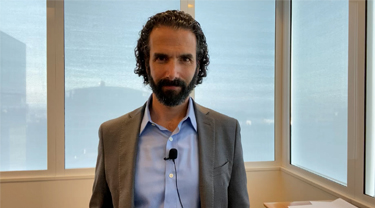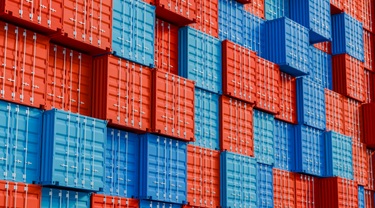American poet and civil rights activist Maya Angelou famously said that “you can’t really know where you are going until you know where you have been.” We came into 2022 with hopes of finally putting the COVID-19 volatility behind us, but the lingering fallout continues to cause global economic hardships.
In EDC Economics most recent Country Risk Quarterly, our country risk outlook assesses the impact of the deeply rooted pandemic-related setbacks. In addition to the unspeakable human toll, the resulting supply chain disruptions left many countries with reduced access to critical staples and having to contend with the ensuing rise in prices. While transport disruptions have eased since last fall, they remain at elevated levels and still subject to ongoing government restrictions, geopolitical tensions and extreme weather events. The war in Ukraine piled on the hardship, further pushing up the price of essential commodities, especially in food and energy.
In response to inflationary pressures the world’s central bankers dutifully raised interest rates, rightfully calculating that weaker growth is a preferred alternative to runaway inflation. As a result, many countries are now dealing with declining consumer purchasing power, rising business pessimism and a move into a tighter credit environment, hitting both the supply and demand side of the equation.
What’s more, China’s Omicron surge in the spring happened at precisely the wrong moment for that country’s economy, following a debt crisis at several large real estate companies that spread through the property sector. The subsequent slowdown of the Chinese economy, a driver of the weakness across developing markets, is having repercussions from Asia to Latin America. EDC Economics’ risk rating most tied to current market conditions, the short-term commercial risk rating, is flashing red across many markets.
While food and fuel prices have started to come down, they remain high by historical standards. This will continue to hit large importing countries, like Egypt, India, and Turkey, also dealing with largescale currency weakness. In response, some governments have drawn down foreign exchange reserves, boosted subsidies, or limited non-essential imports. These dynamics, together with higher borrowing costs, will pressure EDC’s commercial country ceiling rating in a number of key markets. Energy exporters such as Qatar and Algeria will continue to benefit from the positive terms-of-trade impact, especially as Europe looks to reorient its supply networks.
You should also check out
EDC interactive tool offers economic insights on Canada’s Top 75 trading partners.
In response to the pandemic, general government debt has jumped 32% at the global level, to a remarkable $82 trillion. This is raising concerns around developing market sovereigns (and some weaker developed market ones) many of whom came into the pandemic with elevated debt levels already and spent the last few years experimenting with larger budget deficits.
Not only will higher global interest rates lead to a reversal of capital flows out of developing markets, but the resulting strength of the U.S. dollar will make USD-denominated debt more expensive to carry. This will leave many governments more reliant on the International Monetary Fund (IMF) and other multilateral development banks.
There are now 16 sovereigns on the J.P. Morgan Emerging Market Bond Index (EMBI) with spreads above 1,000 basis points. In January 2019, it was only five. While our sovereign probability of default ratings doesn’t foresee a wave of sovereign defaults, there are several frontier markets that are in danger of following Sri Lanka’s lead, including El Salvador, Pakistan and Ghana, among others.
In addition to rising debt levels, COVID-19 left us with rising income inequality as well, which had been on the decline prior to the pandemic. As food and fuel insecurity grows, particularly in developing markets, and governments struggle to contain their inflationary impacts, prospects for social unrest increase. History is replete with examples of higher food and energy prices triggering political instability, as was the case in the Arab Spring.
Additionally, with the war in Ukraine still very much front and centre, and Russian President Vladimir Putin’s nuclear sabre-rattling risking further escalation, we’ve downgraded our political violence ratings for several Eastern European states bordering Ukraine. Meanwhile, tensions between China and Taiwan continue to loom large, and prospects for a renewed nuclear agreement between Iran and the West look increasingly unlikely.
The bottom line?
The more downbeat outlook for the global economy has caused country risk, particularly in the short term, to rise. But this doesn’t mean that Canadian companies should sit on the sidelines. In fact, it’s often in periods like this, when opportunities are at their greatest. The key is understanding the risks and planning around them. To paraphrase our muse once more, while we may encounter defeat, we must not be defeated.
This week, a very special thanks to Ian Tobman, manager of our Economic and Political Intelligence Centre.
As always, at EDC Economics, we value your feedback. If you have ideas for topics that you would like us to explore, please email us at economics@edc.ca and we’ll do our best to cover them.
This commentary is presented for informational purposes only. It’s not intended to be a comprehensive or detailed statement on any subject and no representations or warranties, express or implied, are made as to its accuracy, timeliness or completeness. Nothing in this commentary is intended to provide financial, legal, accounting or tax advice nor should it be relied upon. EDC nor the author is liable whatsoever for any loss or damage caused by, or resulting from, any use of or any inaccuracies, errors or omissions in the information provided.





